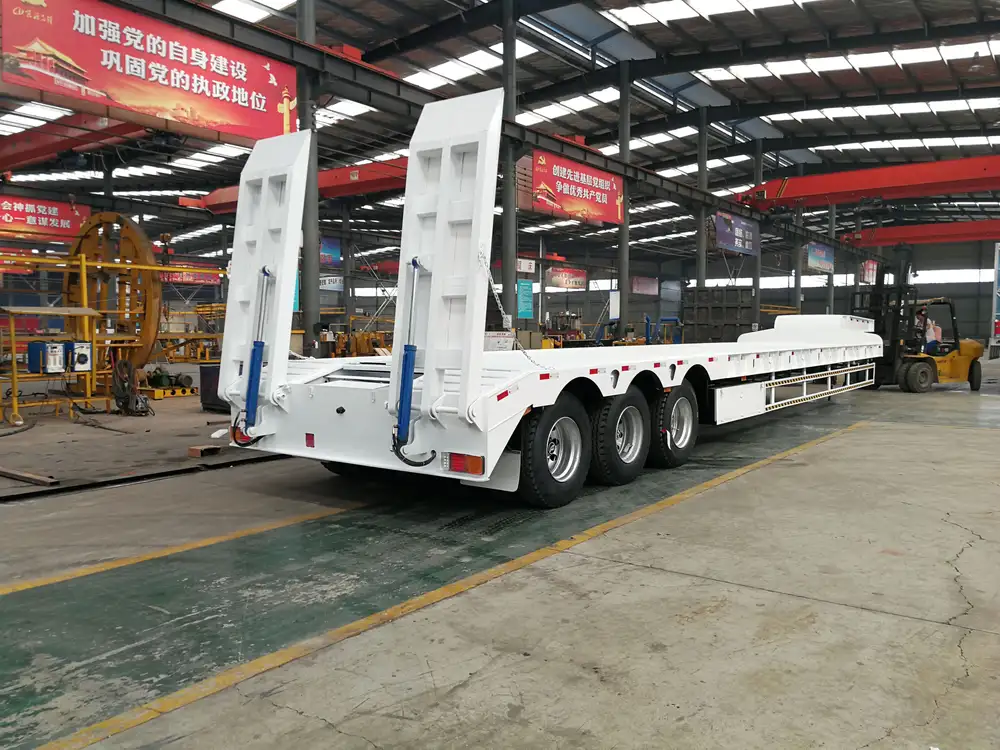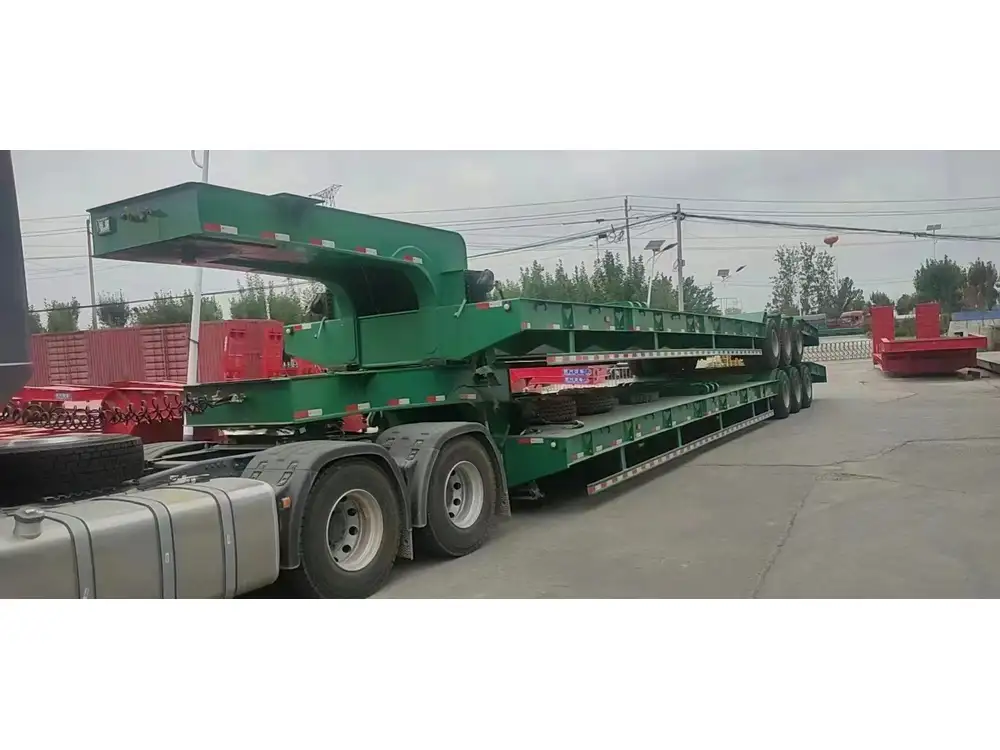When it comes to maximizing efficiency in construction, landscaping, or waste management, understanding how to make a dump trailer dump faster can lead to significant time and cost savings. Whether you’re a seasoned contractor, a DIY enthusiast, or a landscaping professional, improving the dumping speed of your trailer is essential. Here, we delve into various strategies that can enhance the dump operation, ensuring you get the job done quickly and effectively.
Understanding the Mechanics of Dump Trailers
Before we delve into practical strategies, let’s first understand how dump trailers function:
| Component | Function |
|---|---|
| Hydraulic System | Utilizes hydraulic fluid to lift and dump the cargo |
| Trailer Frame | Supports the load and provides stability |
| Tipping Mechanism | Allows for the controlled angle of dump |
| Axles & Tires | Ensure safe towing and mobility |
A dump trailer operates on a hydraulic system that lifts the trailer bed at an angle to allow contents to slide out. Understanding these components can help you identify improvement areas to enhance dumping speed.
Key Factors Influencing Dumping Speed
Understanding the following factors can help in making informed decisions to enhance the speed at which your dump trailer operates:
| Factor | Influence on Speed |
|---|---|
| Weight Distribution | Affects the balance of the dump trailer |
| Hydraulic Fluid Level | Low levels can slow down hydraulic operations |
| Trailer Maintenance | Regular checks can prevent performance loss |
| Loading Technique | Proper loading speeds up the dumping process |

1. Optimize Weight Distribution
The distribution of weight in the trailer can significantly influence how quickly it can dump its contents. When loading, ensure that:
- Balance is Key: Place heavier materials towards the front of the trailer to maintain balance and prevent tipping issues.
- Load Height Matters: Avoid overloading. Ensure the cargo is within the trailer’s capacity specifications. An overloaded trailer will not dump as efficiently.
2. Maintain Hydraulic Systems
Hydraulic systems are at the heart of a dump trailer’s functionality. To ensure they operate at peak performance:
- Check Fluid Levels Regularly: A low hydraulic fluid level can cause sluggish response times when raising or lowering the trailer bed.
- Inspect for Leaks: Small leaks can lead to a significant decrease in performance. Regular inspections will help catch issues early.
- Clean Filters: Dirty hydraulic filters can restrict fluid flow. Ensure your filters are clean to maintain optimal hydraulic performance.
3. Regular Maintenance
Regular maintenance can help preserve the longevity and efficiency of your dump trailer:
- Inspect the Tipping Mechanism: Ensure that the hydraulic cylinder and tipping pins are free of rust and wear. Lubricate moving parts as necessary.
- Tire Condition Matters: Low tire pressures or worn tires can reduce the overall performance and safety of the dump trailer. Check and maintain recommended tire pressures.
- Frame Integrity: Regularly inspect the trailer frame for cracks or damage. A compromised frame can not only slow down the dumping process but can also pose safety risks.

4. Streamline Loading Techniques
How you load materials into your trailer can significantly impact how quickly it dumps:
- Use Uniform Material Sizes: When possible, use materials of uniform size. This ensures consistent loading and stability during transport.
- Avoid Overfills: Overstuffing the trailer can lead to complications when it’s time to unload, as materials may get stuck or not slide out properly.
5. Leveraging Technology
In today’s technologically advanced environment, utilizing modern tools can make a significant difference in dump trailer efficiency:
| Technology | Impact on Dumping Speed |
|---|---|
| Remote Control Systems | Allows for operation from a distance |
| Electronic Monitoring | Tracks load distribution and alerts on weaknesses |
Remote-control systems allow users to operate the dump trailer from a safe distance, providing better visibility for the operator. Additionally, electronic monitoring helps track the performance of the hydraulic system, offering insights into when maintenance is required.
Proper Loading and Unloading Techniques
Optimizing how materials are loaded and unloaded can drastically reduce dumping times:
Loading Strategies:
- Utilize a ramp or conveyor belt to ensure smooth loading.
- Load from the front to back, allowing materials to settle evenly.
Unloading Strategies:
- Set the trailer on a slight incline if possible. This helps gravity aid the dumping process.
- Identify the best angle for tipping to ensure complete unloading—finding the optimal angle may take some experimentation with different types of materials.

Choosing the Right Dump Trailer
Choosing the appropriate dump trailer for your needs can profoundly influence your overall efficiency:
Types of Dump Trailers: A Comparison
| Type of Dump Trailer | Best For | Key Features |
|---|---|---|
| Single Axle | Small loads, tight spaces | Maneuverable, economical |
| Dual Axle | Moderate loads | More stable, higher capacities |
| Tri-Axle | Heavy loads | Exceptional stability, suited for tougher jobs |
By selecting the right type of dump trailer for your operations, you can optimize both loading and dumping time.
Safety First: Ensure a Safe Dumping Environment
While improving dumping speed is important, safety must never be compromised:
- Wear Protective Gear: Always wear gloves, helmets, and other safety gear while operating the dump trailer.
- Check Surroundings: Ensure the dumping area is clear of obstacles and uneven terrain—this reduces the risk of accidents.
- Use Proper Signals: Communication between operators and ground crew can help avoid misjudgments during the unloading process.

Troubleshooting Common Dumping Issues
Awareness of potential problems and how to resolve them is essential:
Common Issues vs. Solutions
| Issue | Solution |
|---|---|
| Hydraulic not lifting | Check fluid levels and inspect for leaks |
| Load getting stuck | Adjust the unloading angle and check for matting |
| Uneven dumping | Improve load distribution and balance |
| Slow response time | Ensure no obstructions in hydraulic lines |
If faced with a problem, quickly diagnosing and addressing it can save both time and productivity.
Conclusion
Understanding how to make a dump trailer dump faster encompasses a multitude of factors, from maintaining mechanical components to adopting efficient loading practices. By following the strategies outlined, users can achieve enhanced efficiency, resulting in significant time and cost savings in their operations.
Investing in regular maintenance, optimizing load distribution, utilizing modern technology, and ensuring safe practices will not only improve your dumping speed but also extend the life and performance of your dump trailer.
Implement these strategies today, and experience the difference in your operational efficiency!



